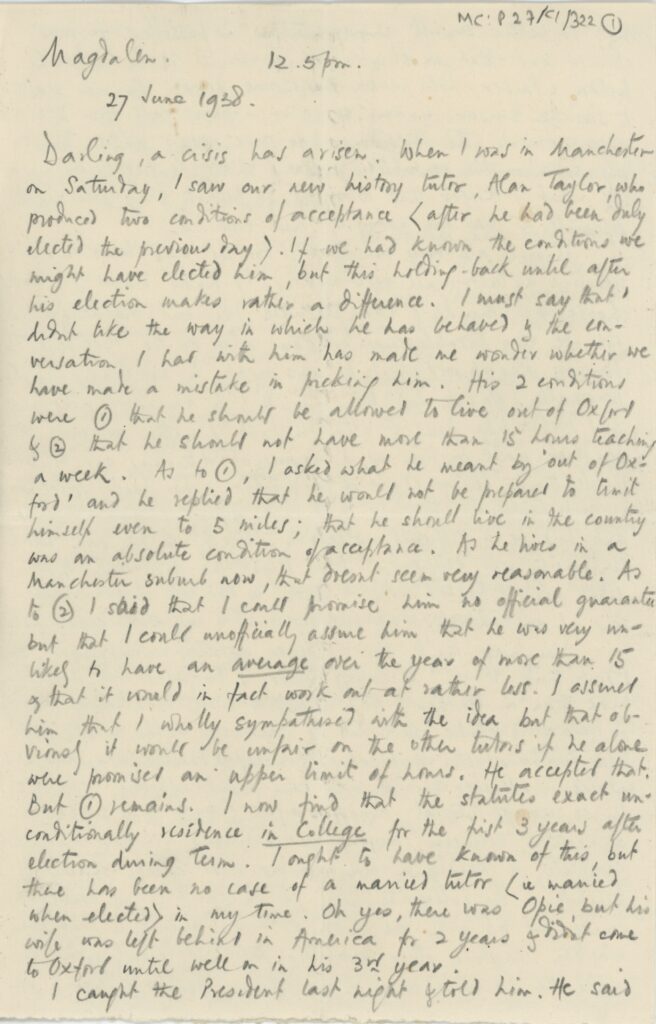
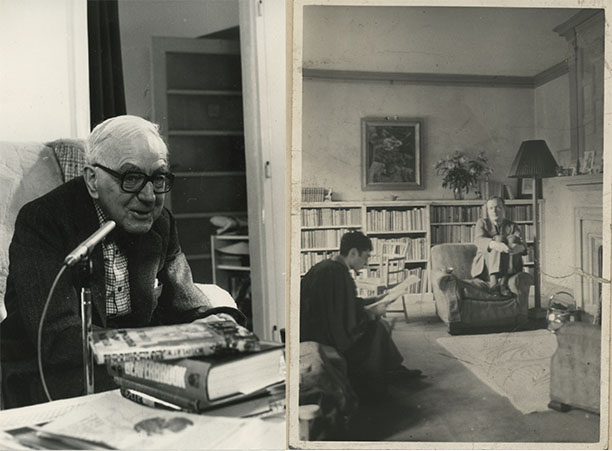

Taylor and McFarlane were colleagues for twenty-five years. Although their relationship remained professional, they hardly ever agreed on anything and had very different ideas about what it meant to be a History Tutor.
Here we can see examples of Magdalen students’ work, marked by McFarlane and Taylor. Compared to Taylor’s minimal three words, McFarlane put much more effort into grading assignments, providing more detailed comments and correcting minor errors.
Where McFarlane thrived in the tutorial room, Taylor’s success was in the lecture theatre. His lectures attracted large audiences. Whilst the same can be said for McFarlane, it’s possible his lectures were less engaging affairs. One of McFarlane’s students, Karl Leyser, doodled during one of his Henry IV lectures.
![A good analysis. (handwritten) Doodle of a wrinkled male face [by Bradbury, depicting Taylor?]](https://twomagdalenhistorians.magd.ox.ac.uk/wp-content/uploads/2024/06/P326.MS1_.1-scaled.jpg)
Gobbet marked by A.J.P. Taylor
Magdalen student Richard Bradbury (C. 1963-6) wrote this gobbet (a short commentary on an extract from a set text) on “The Making of the Ententes” for A.J.P. Taylor to assess. Taylor gave a very brief commentary; just three words! Perhaps this doodle- of Taylor?- was Bradbury’s response to the limited feedback he received.
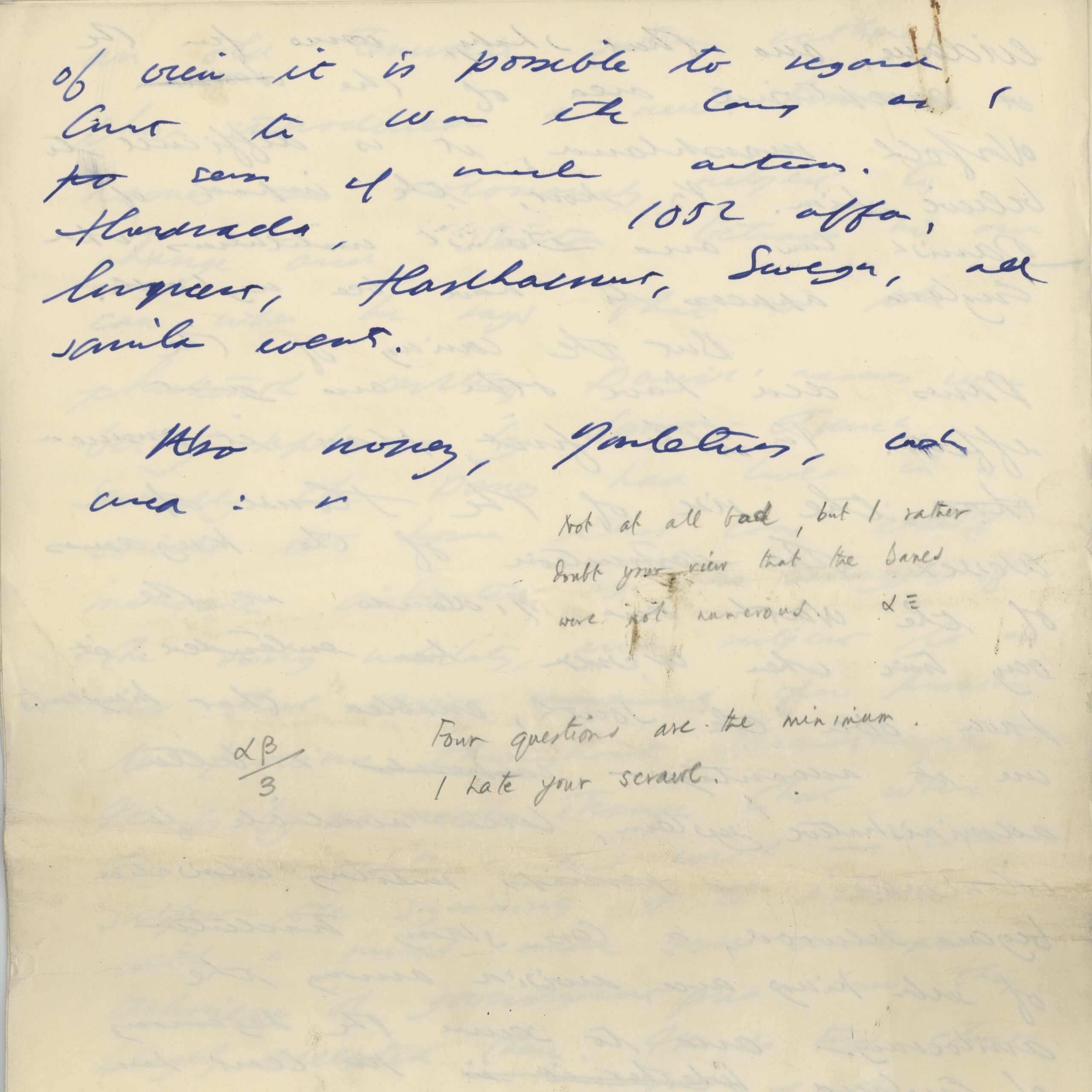
Collection paper on early English History, written by James Campbell in January 1953
Here we can see McFarlane’s assessment of a student’s work, which is slightly more detailed than Taylor’s feedback to Richard Bradbury’s gobbet. It’s unclear how useful McFarlane’s ‘I hate your scrawl’ comment was to Campbell, however.
Note the grade given is α β / 3. The marking scheme used for Collections (exams taken by Oxford students, which they must pass to progress to the next stage of their degree) at that time used the Greek alphabet. Campbell was given alpha beta for the three essays; not quite the highest mark of alpha, but still a good one.
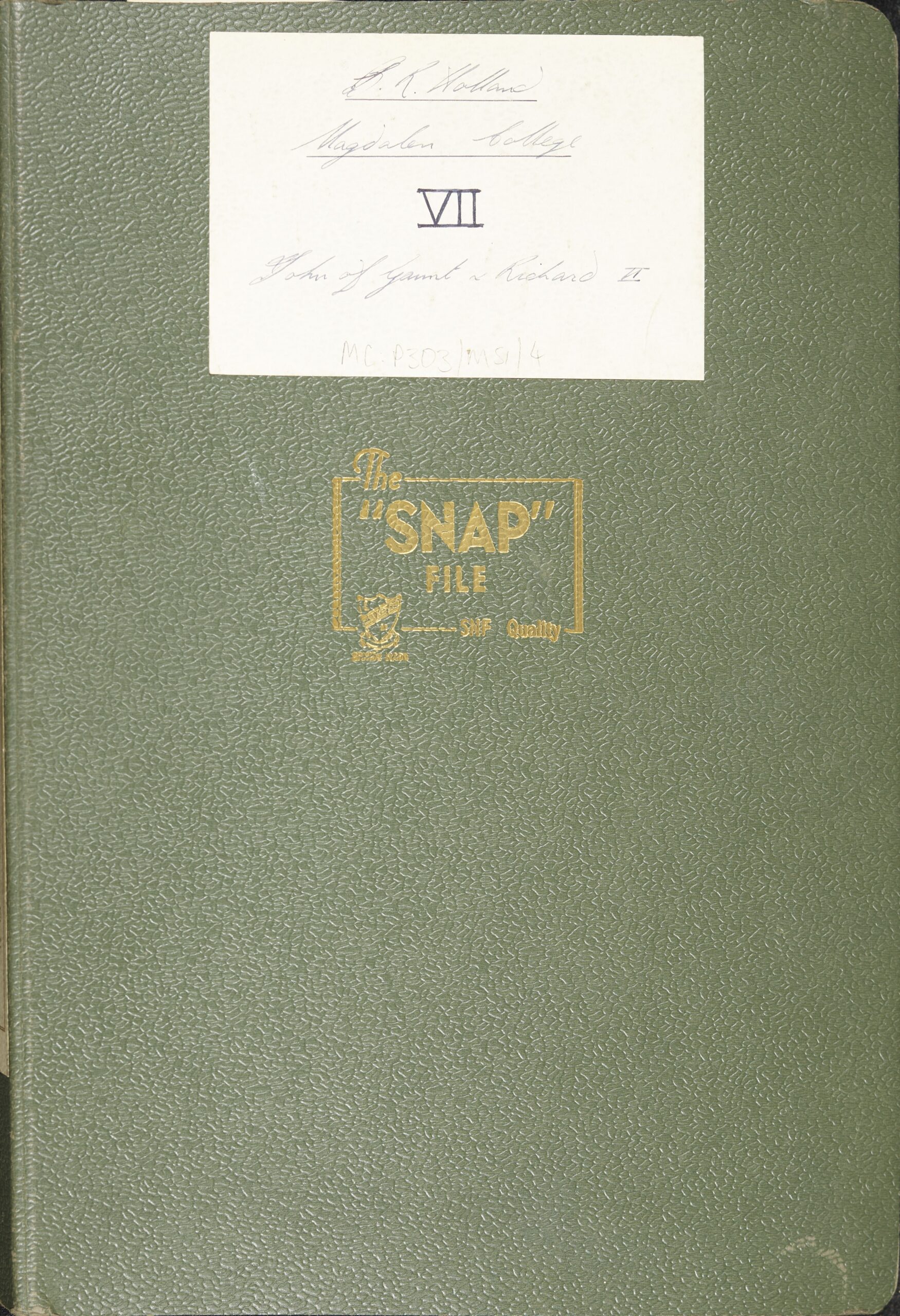
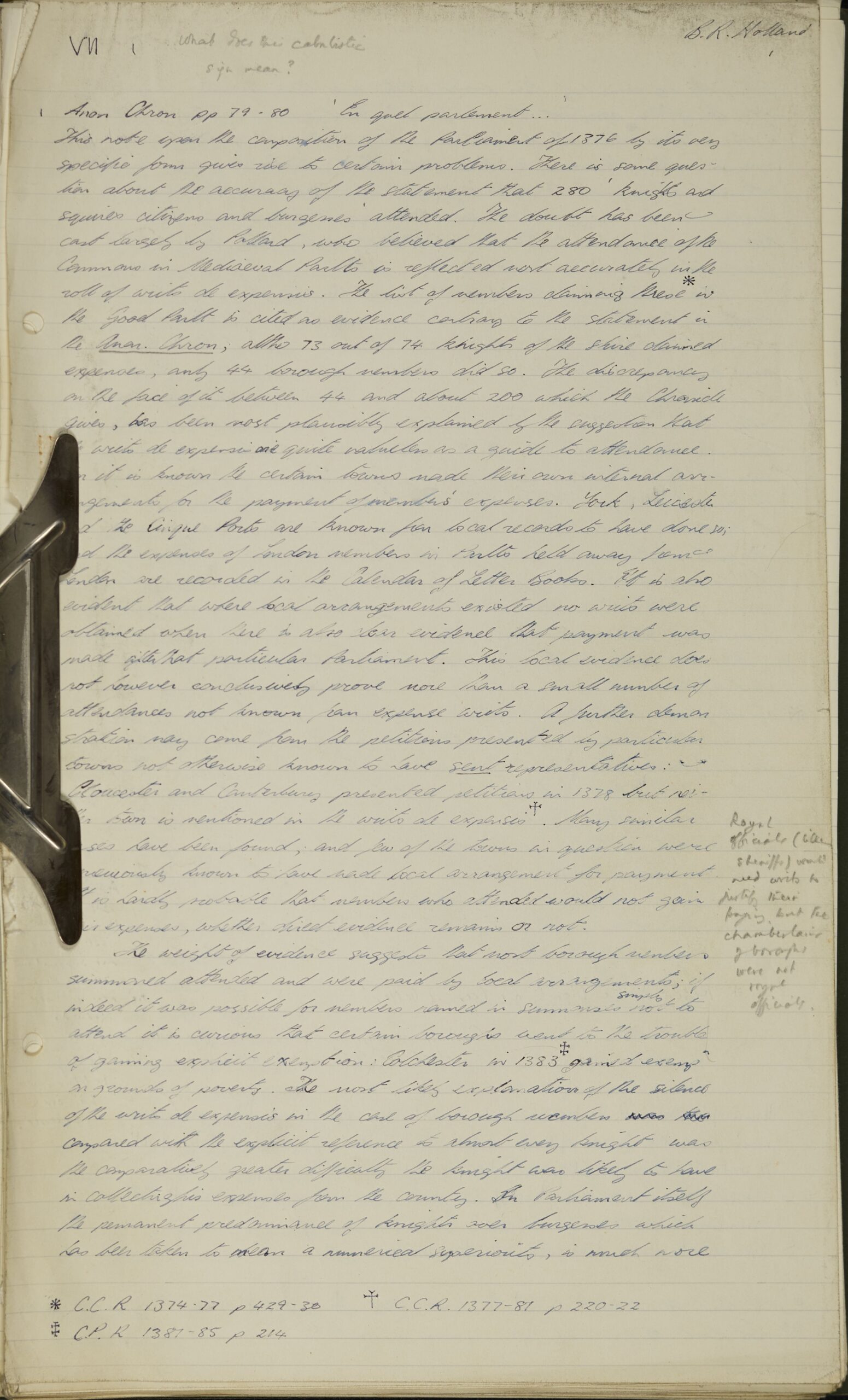
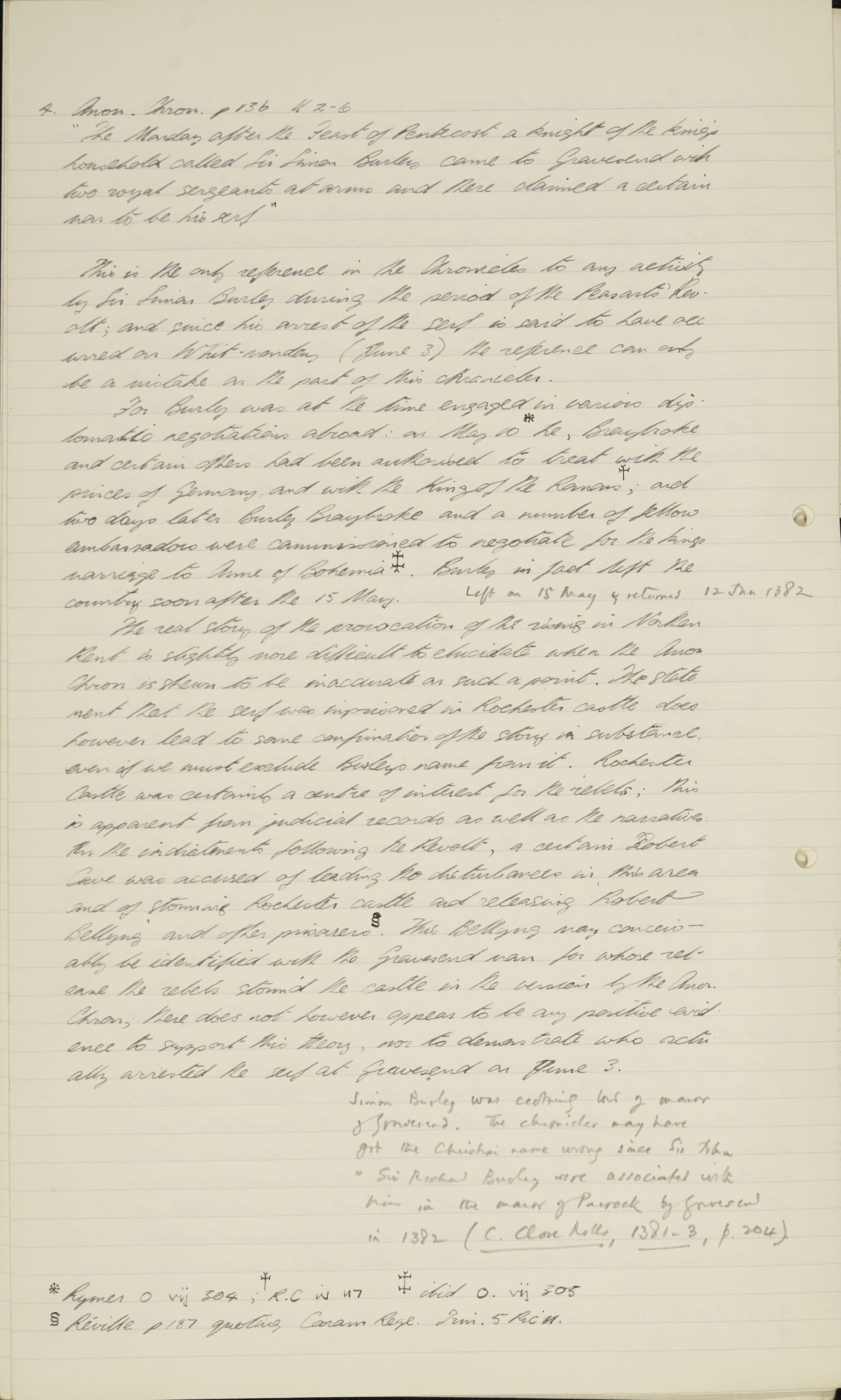
Gobbet written by Robert Holland, K.B. McFarlane’s student
In his approach to historical research McFarlane was meticulous. He set high standards for himself and this may explain why he did not publish much during his lifetime. These expectations were extended to his students, as evidenced here in his feedback on essays written by Robert Holland. Holland left wide margins around his work, perhaps at the request of McFarlane so he had plenty of space to write comments. His comments here include a correction on the specific date that Simon Burley left England and a suggestion that a reference work Holland relied on was inaccurate.


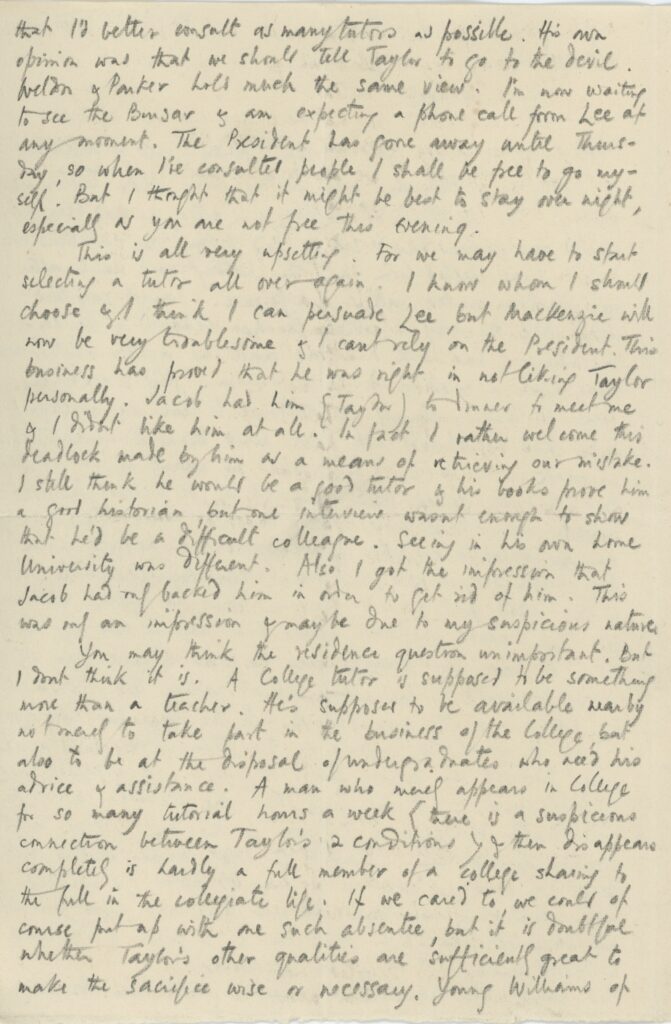
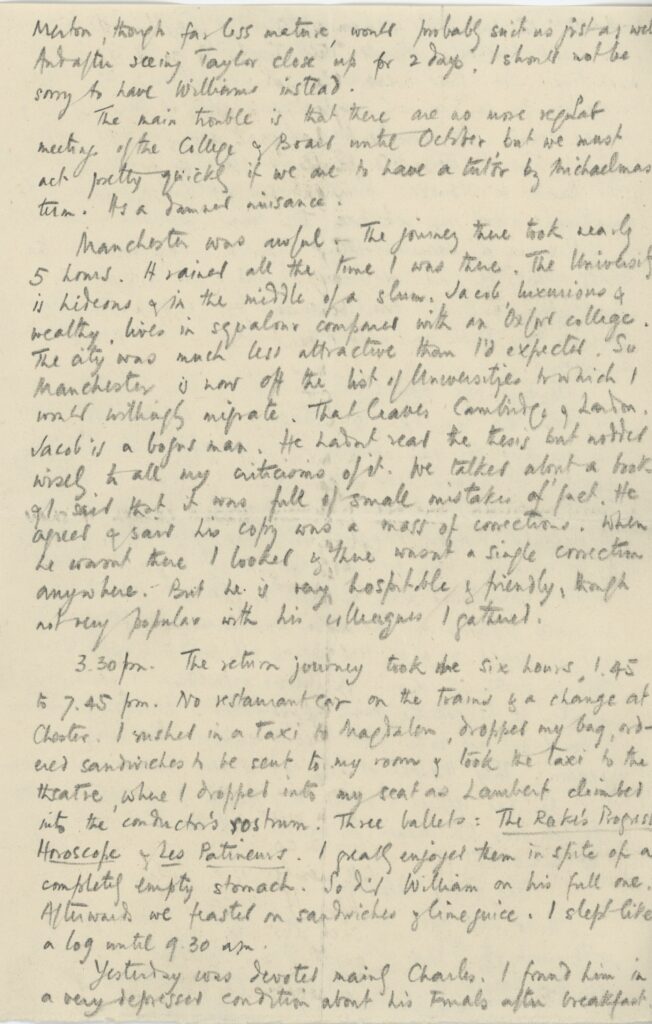
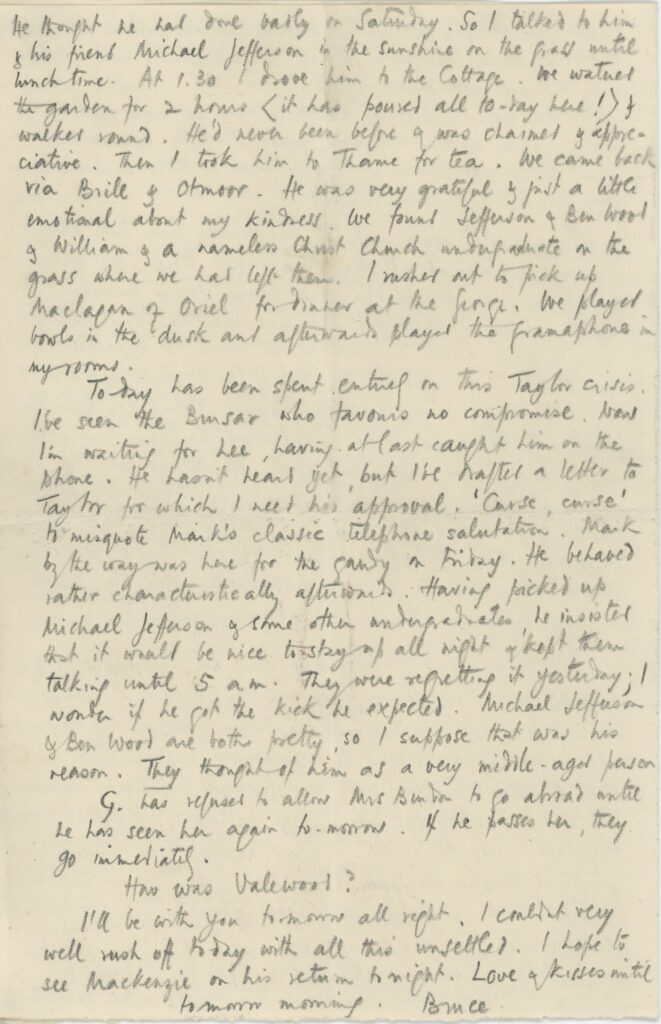
1938 letter to Helena Wright in which K.B. McFarlane gives his views on what a College Tutor ought to be
McFarlane and Taylor had very different approaches to their jobs as History Tutors. Where Taylor was focused on his academic output, and published dozens of books over the course of his career, McFarlane was more concerned about his students and their success. In this letter, McFarlane explains what the role of Tutor at Magdalen College means to him and tells Wright about cheering up an upset student following his Final exams.
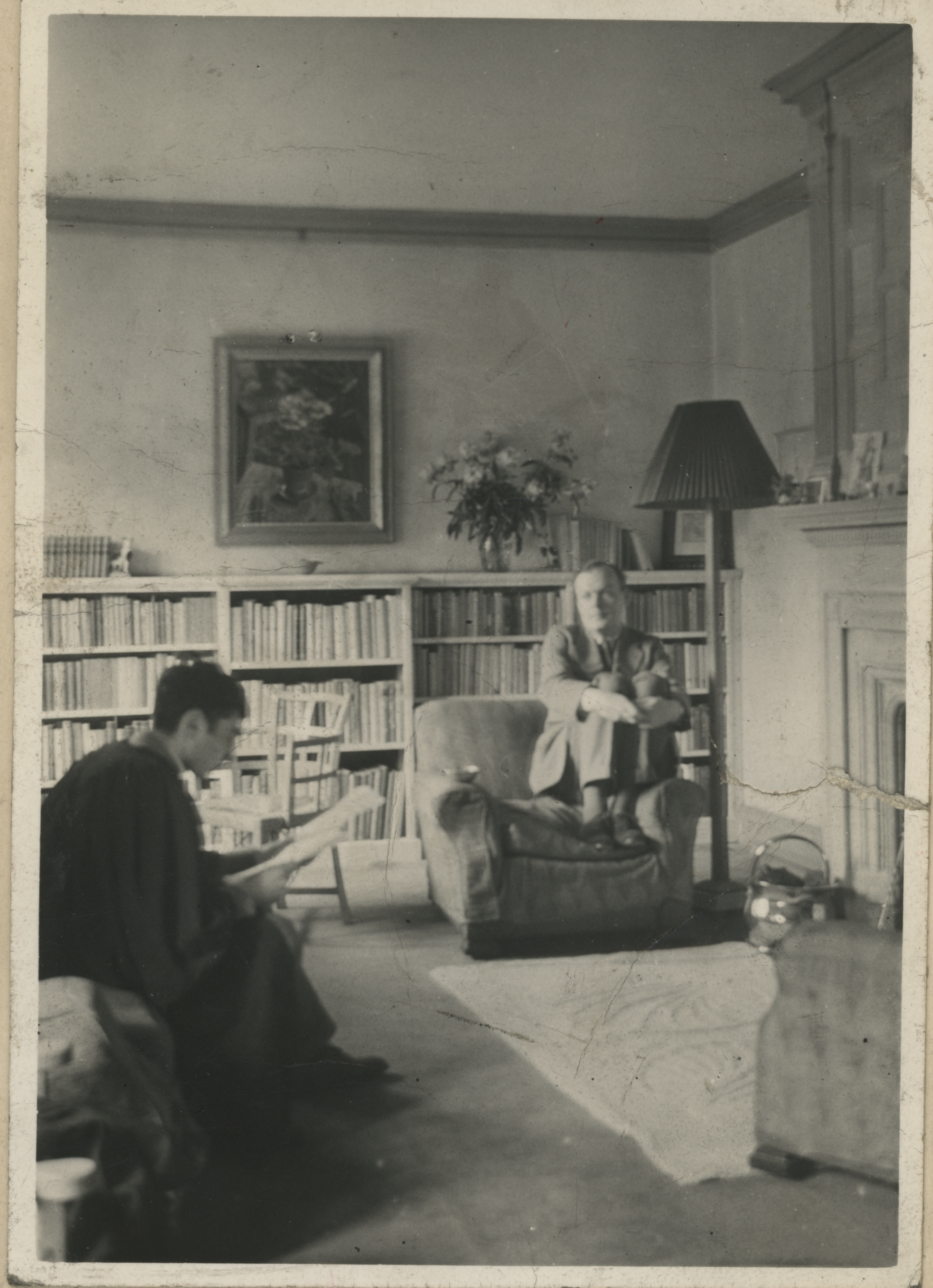
K.B. McFarlane and his student, Karl Leyser, in a tutorial
Leyser came to the UK as a child refugee, having fled Nazi Germany. He came up to Magdalen in 1939 as a Demy, reading History. Although this photo appears to demonstrate the power dynamic between a Tutor and his student – McFarlane is literally seated higher than Leyser, looking down on him – the two men became friends. When Leyser was interned as an ‘enemy alien,’ during the war, McFarlane sent him regular care packages of letters, books, and food.† Leyser was later became a Tutor at Magdalen and, eventually, Senior Dean. Some of McFarlane’s letters to Leyser appear in Letters to Friends 1940-1966.
†‘From Jewish Refugee to Senior Dean: The Life of Karl Leyser,’ Barnabas Balint. Online: https://www.magd.ox.ac.uk/blog/from-jewish-refugee-to-senior-dean-the-life-of-karl-leyser/
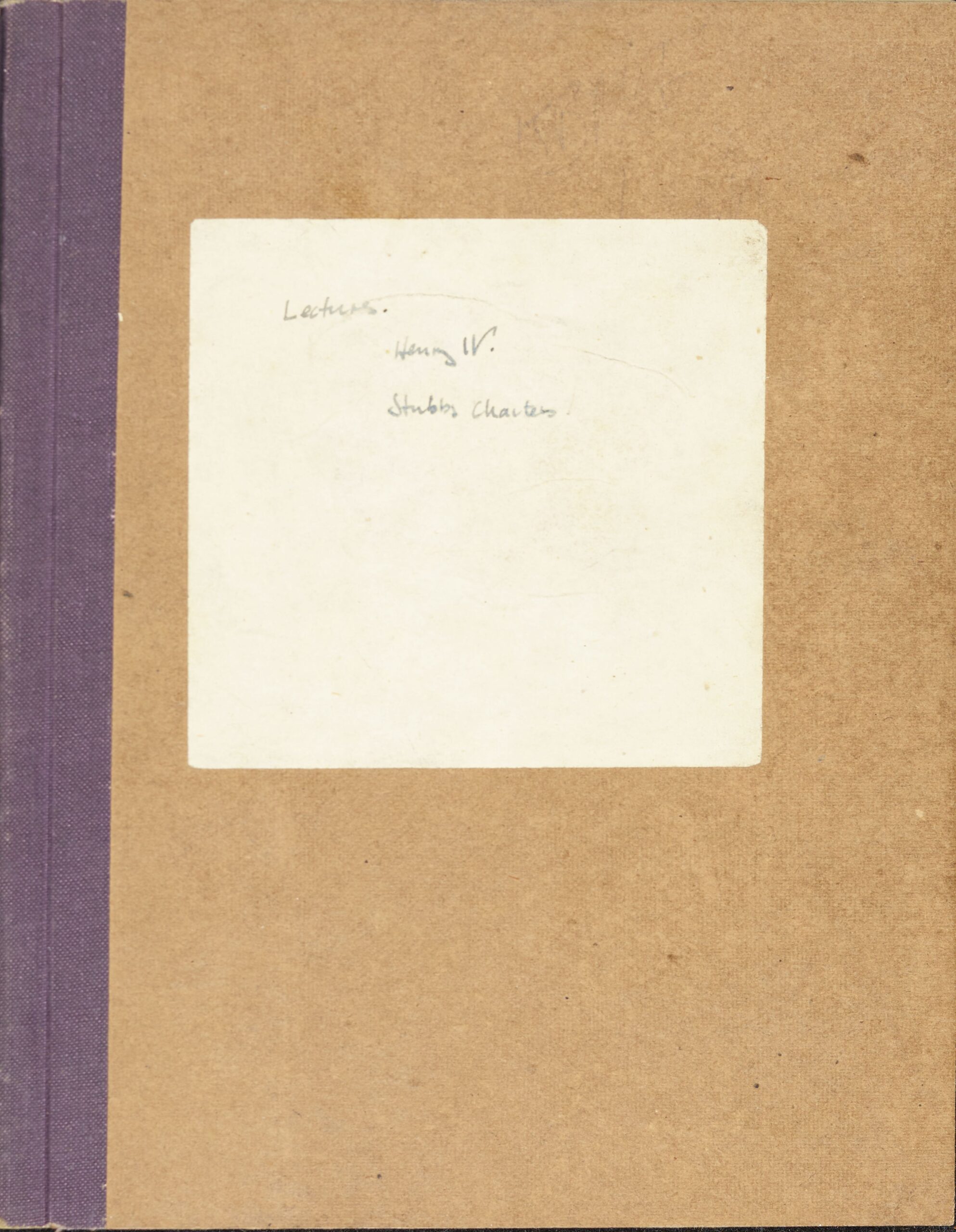
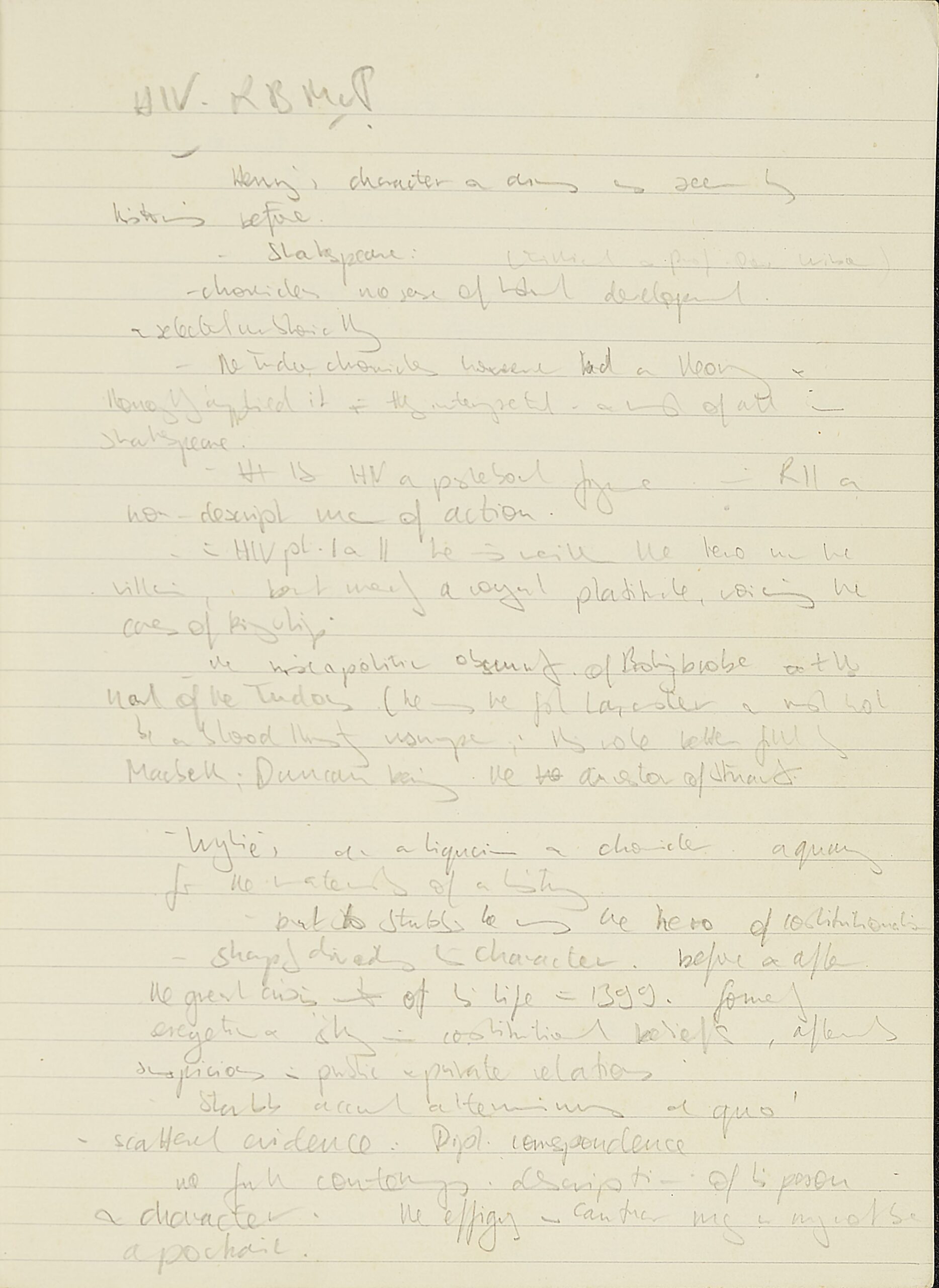
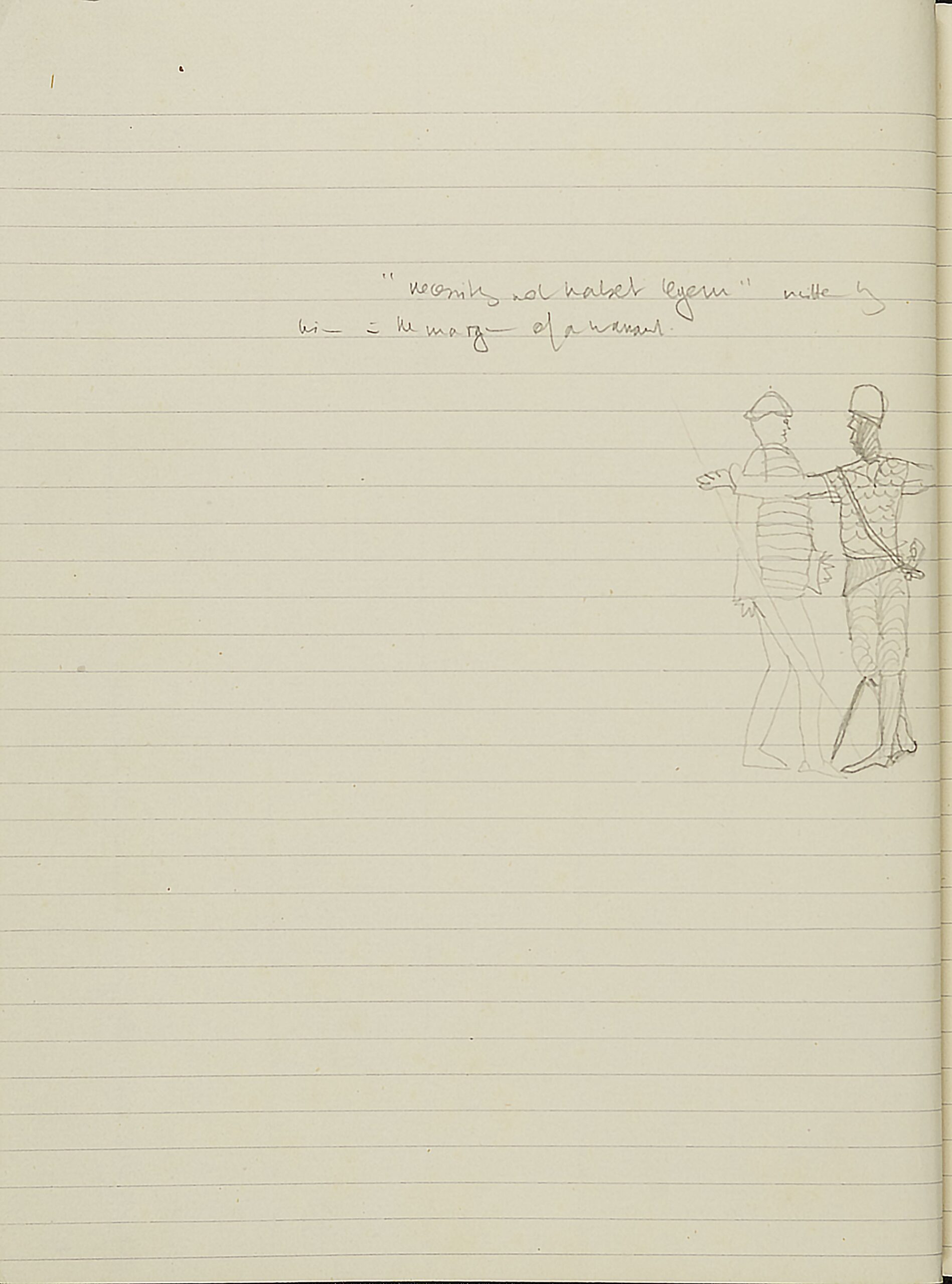
Karl Leyser’s notebook used during K.B. McFarlane’s lectures on Henry IV
Karl Leyser was greatly influenced by McFarlane and went on to become a Historian himself. However, perhaps McFarlane’s lectures were not quite as engaging as his tutorials. On the second page of the notebook, used to take notes at McFarlane’s lectures on Henry IV, Leyser has drawn a doodle of two soldiers.
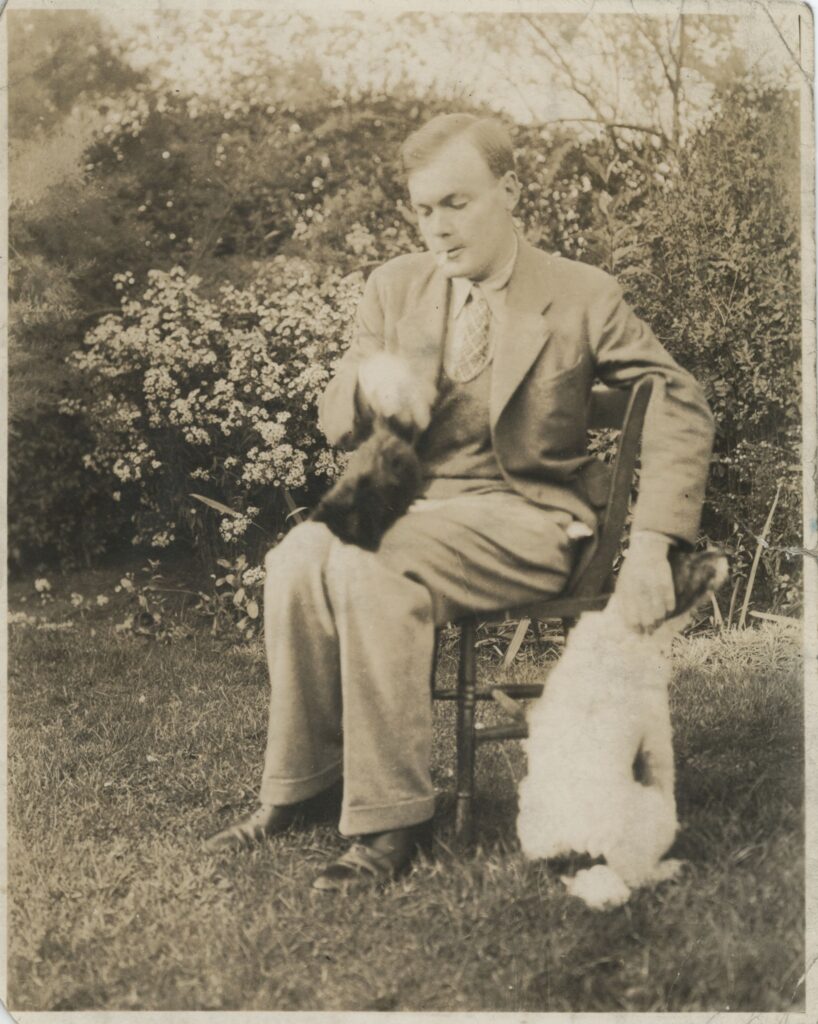

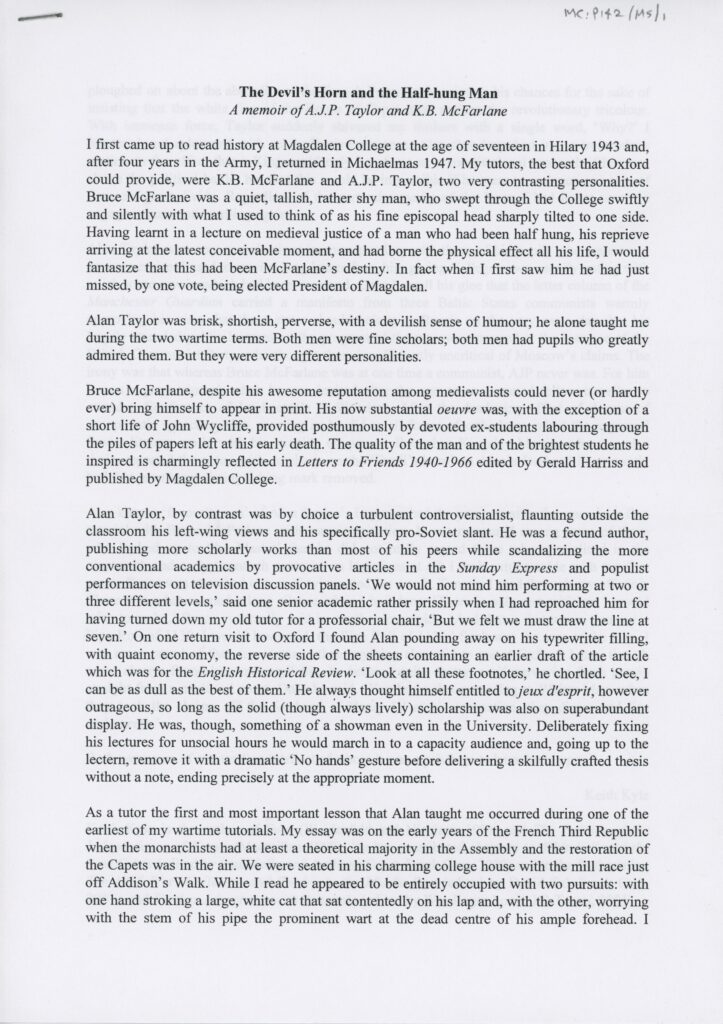
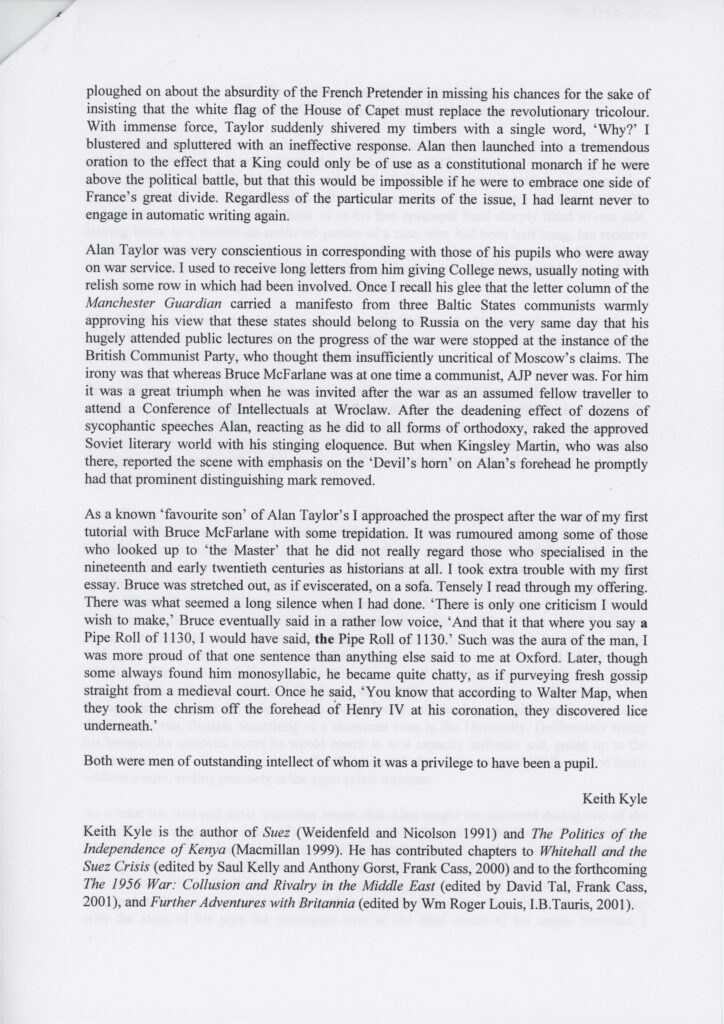
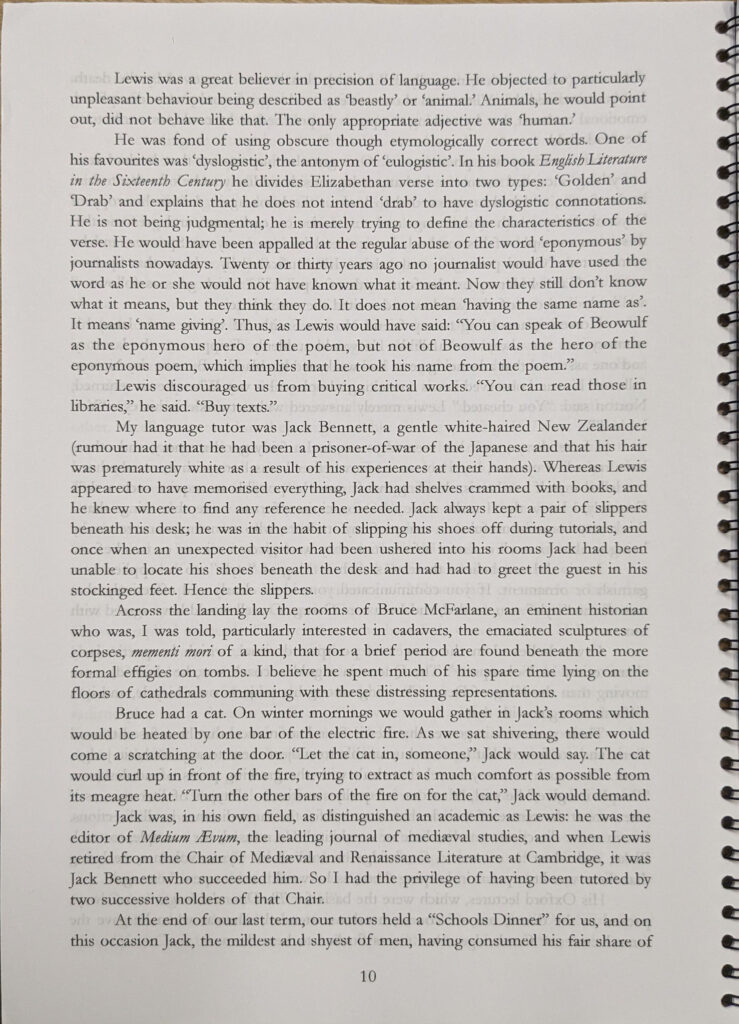
Informal snapshot of K.B. McFarlane seated in the garden, with cat on his lap and dog at his side
Over the years, McFarlane had 3 Siamese cats, respectively named Bog de Clare, Stubbs, and Jasper. Two of his former students fondly recall Bruce’s cats in their recollections of McFarlane. In “My Oxford Years: An extract from One Foot in the Gravel; a memoir for my grand-daughters” by Bennet Maxwell (C. 1953–7), Maxwell recalls that Bruce’s cat used to crash his tutorials with Language Tutor, Jack Bennett. Maxwell was grateful for the cat’s presence as it prompted his tutor to turn the heat up! In his overview of McFarlane’s life at the beginning of Letters to Friends, 1940 – 1966, Karl Leyser recalls that McFarlane collected porcelain cats. Such was the size of his collection that it enabled his students to take wagers on just how many porcelain cats he owned.
In putting together this exhibition, it became clear that K.B. McFarlane and A.J.P. Taylor were two very different men. One thing they did have in common, though, was their love for their pet cats. In his memoir of A.J.P. Taylor and K.B. McFarlane, The Devil’s Horn and the Half-hung Man, their former student John Kyle (E .1943 & 1947-50) recalls reading out his essay to Taylor in a tutorial: “While I read he appeared to be entirely occupied with two pursuits: with one hand stroking a large, white cat that sat contentedly on his lap and, with the other, worrying with the stem of his pipe the prominent wart at the dead centre of his ample forehead.”†
† Kyle, Keith., The Devil’s Horn and the Half-hung Man: memoir of A.J.P. Taylor and K.B. McFarlane, Magdalen College Archives, P142/MS/1.